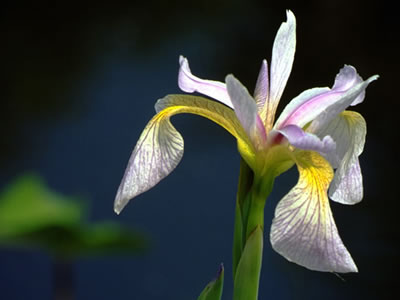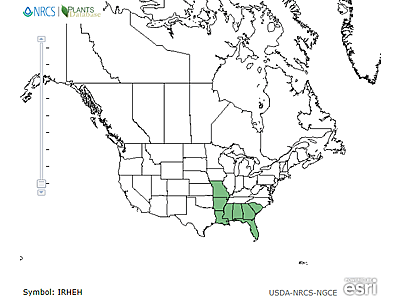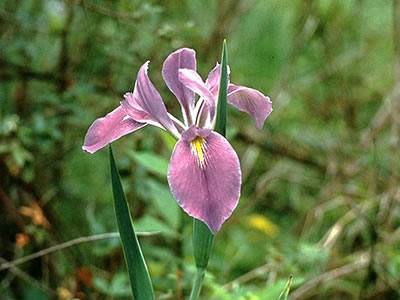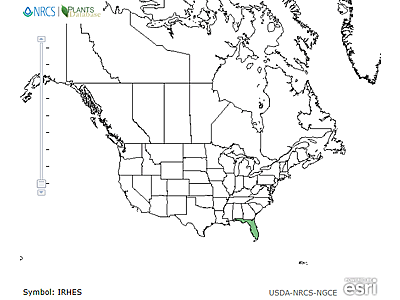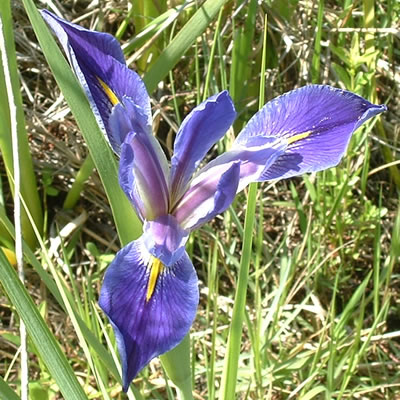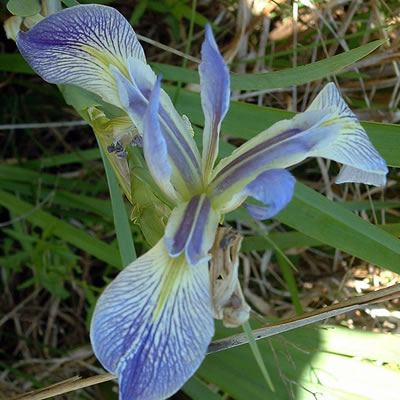Our Native Irises: Louisiana Irises
Iris hexagona: Dixie Iris
The Dixie iris occurs in Alabama, Florida, Georgia, and South Carolina.
Iris hexagona has light lavender white to rich pink to deep purple flowers and rarely occurs as a white form. The sepals are widely spreading and arching downward. The signal is a rich yellow stripe or spot on the central ridge. The petals are ascend and are smaller and narrower than the sepals. The flower is fragrant. The inflorescence is multi-flowered with two terminal flowers; arising above the leaves. The yellow-green to bright green leaves are stiff and erect, arising from shallowly rooted, branching rhizomes that can form large colonies.
Iris hexagona is commonly found growing in wet meadows, marshes and bogs.
For More Information
Iris hexagona var. hexagona: Dixie Iris
The Dixie iris occurs in Alabama, Florida, Georgia, and South Carolina.
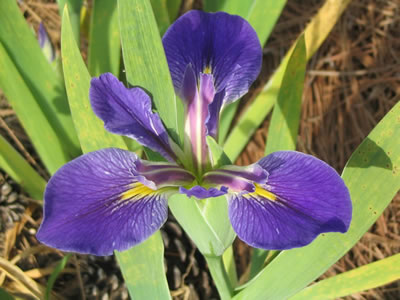 Iris hexagona var. hexagona in a typical wet meadow habitat. Notice how eye-catching the yellow signal is on this flower. Photo by Rodney Barton, North American Native Iris.
Iris hexagona var. hexagona in a typical wet meadow habitat. Notice how eye-catching the yellow signal is on this flower. Photo by Rodney Barton, North American Native Iris.
Iris hexagona var. hexagona has light lavender white to rich pink to deep purple flowers and rarely occurs as a white form. The sepals are widely spreading and arching downward, the apex rounded. The signal is a rich yellow stripe or spot on the central ridge. The petals are ascend and are smaller and narrower than the sepals. The inflorescence is multi-flowered with two terminal flowers, arising above the leaves. The yellow-green leaves remain during and after the plant flowers; arising from shallowly rooted, branching rhizomes that can form large colonies.
Iris hexagona var. hexagona is commonly found growing in wet meadows, marshes and bogs.
For More Information
Iris hexagona var. savannarum: Savanna Iris
The savanna iris occurs in Florida.
Iris hexagona var. savannarum has light lavender blue to deep purple flowers and rarely occurs as a white form. The sepals are widely spreading and arching downward, the apex acute, the signal is a rich yellow stripe or spot on the central ridge. The petals ascend and are smaller and narrower than the sepals. The inflorescence is multi-flowered with two terminal flowers; arising above the leaves. The bright green leaves die back after the plant flowers; arising from shallowly rooted, branching rhizomes that can form large colonies.
Iris hexagona var. savannarum is commonly found growing in wet meadows, marshes and bogs.


